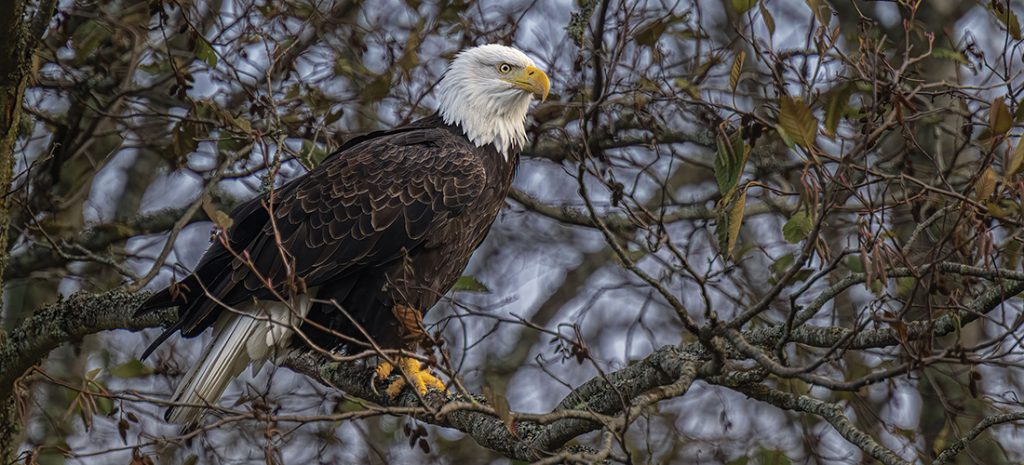Birdwatch

The Eagles Have Landed
America’s bird is on the rebound
By Susan Campbell
Anyone who has had the good fortune to spot a bald eagle, whether soaring overhead or perched along a waterway, cannot help but be awed by their handsome appearance. This large raptor is not only our national symbol but the only eagle found solely in North America.
Benjamin Franklin supposedly lobbied for the wild turkey, the only endemic bird species to the United States, to be our national bird. But Congress decided on the bald eagle in 1782, as a result of its perceived fierce demeanor. In actuality, bald eagles are mainly carrion eaters but will attack wounded mammals, birds and aquatic animals as well. They are very opportunistic and will also snatch prey from crows if they get the chance.
During the first half of the 20th century, eagles were erroneously persecuted by raptor hunters, often by ranchers who were attempting to protect their investments. They were also affected by metal toxicity as a result of feeding on game containing lead shot. Additionally, during the period of broad-scale DDT application, as most people know, the toxin accumulated in carnivores at the top of the food chain. And, as was the case in several bird species, it caused eggshell thinning such that eagle eggs broke long before they could hatch.
Bald eagles were declared an endangered species in 1967. Following the ban on DDT and the passage of the Endangered Species Act in 1973, their numbers began to rebound. On June 28, 2007, the species was declared recovered. Here in North Carolina they are being closely monitored by state biologists. Although the number of nests and young has been increasing, they are still considered threatened here.
In the Sandhills, there are year-round sightings of individuals, most commonly on larger lakes such as Lake Surf (Woodlake) or Lake Pinehurst. At least one pair has been nesting in Moore County for a few years now: in (wait for it) Eagle Springs. Farther north, they can be frequently spotted around Falls or Jordan Lake in the Triangle or Lake Townsend in Greensboro.
In mid-winter, birdwatchers and endangered species biologists are on the lookout for eagle nests. Bald eagle pairs return to their breeding territories and lay eggs ahead of most other raptors (the exception being great horned owls, which begin breeding activities a bit earlier). Their sizable platforms of dead branches and large sticks may or may not be easy to spot. Eagle nests, if they are reused from year to year, will be gradually enlarged but not massive affairs. Newer nests can be well concealed in the top of a live evergreen or large snag.
Eagle young, who typically fledge in April, take three to four years to mature. They will not successfully attract a mate until they have a fully white head and tail. Should you see an adult in the weeks ahead, keep an eye out for a second bird. A pair of adults may mean there is a nest somewhere nearby. If you suspect that you have found a nest, definitely give me a holler! OH
Susan Campbell would love to receive your wildlife sightings and photographs at susan@ncaves.com.
